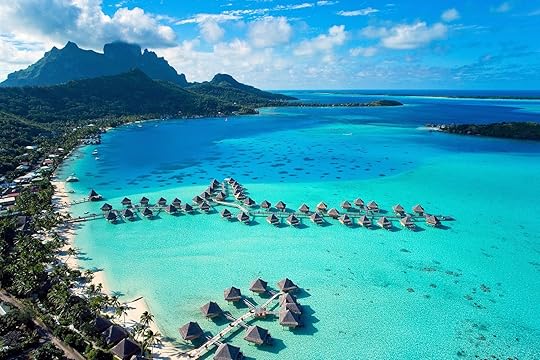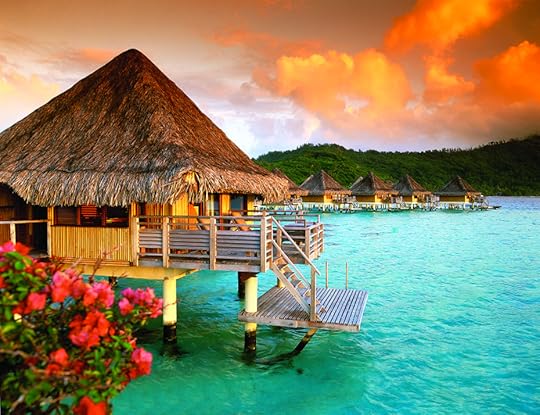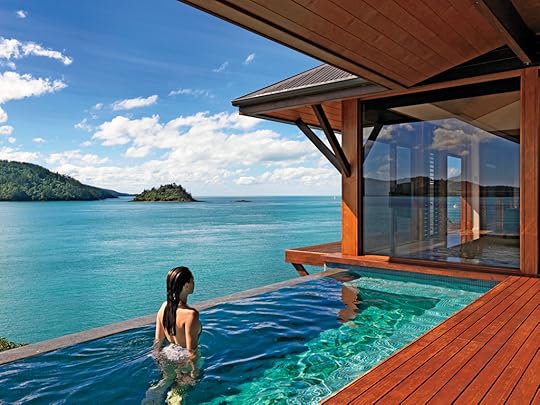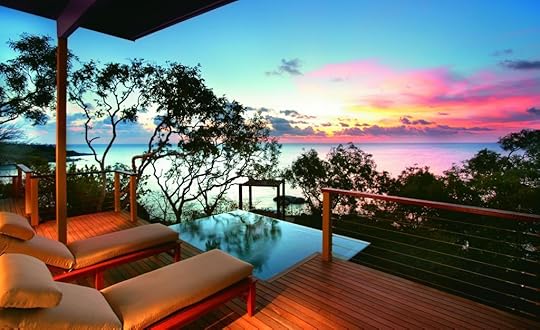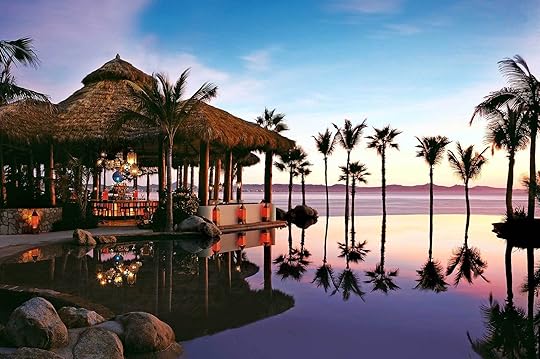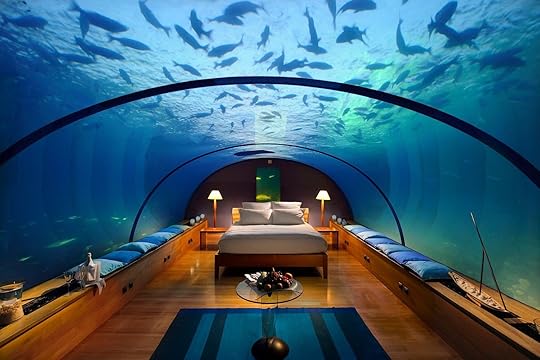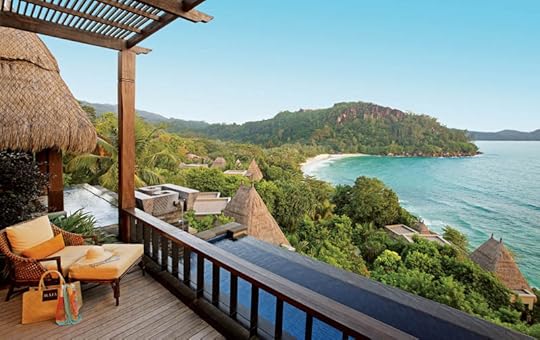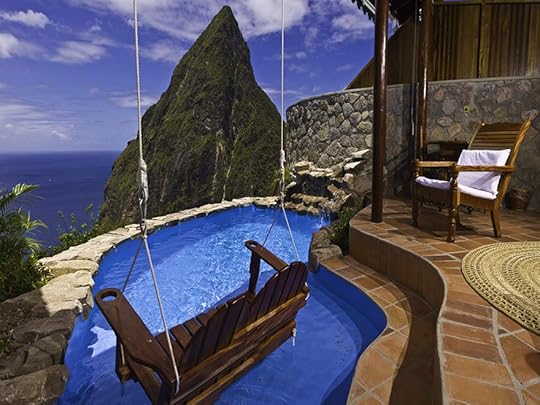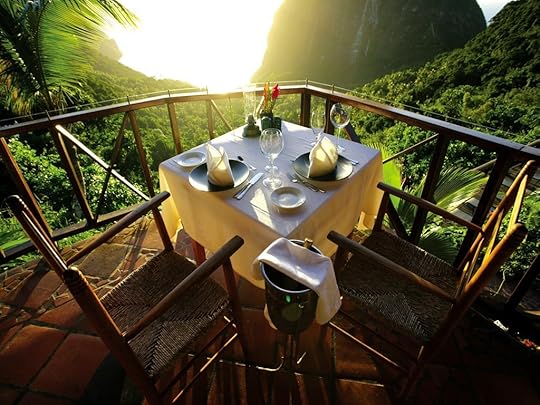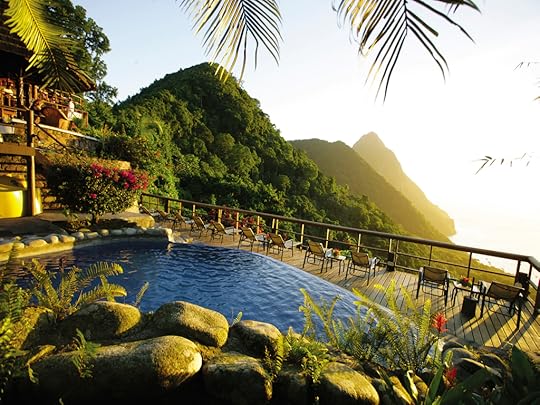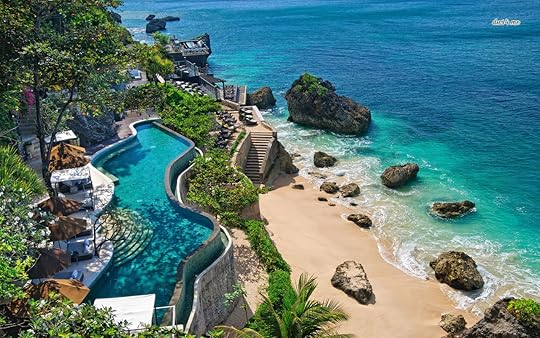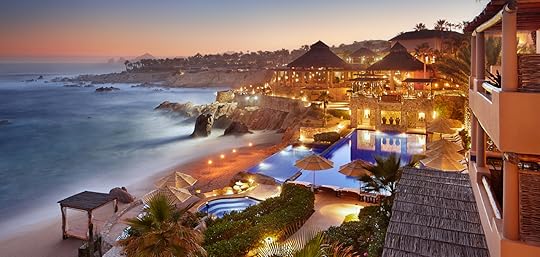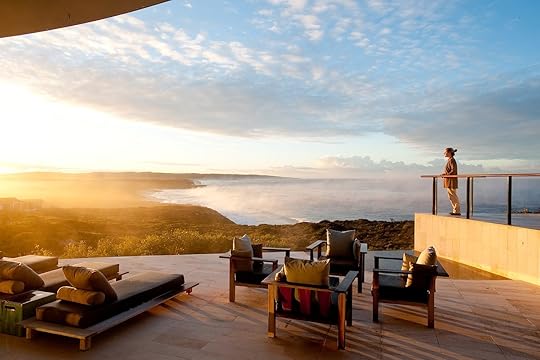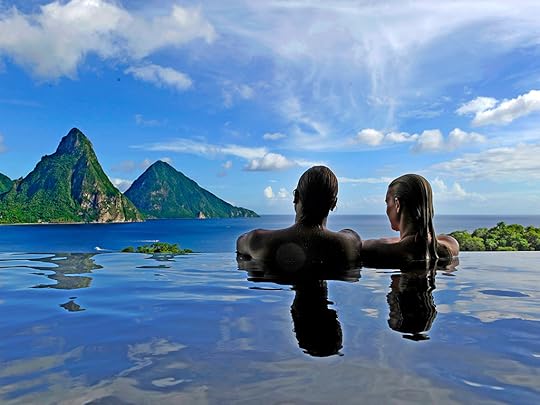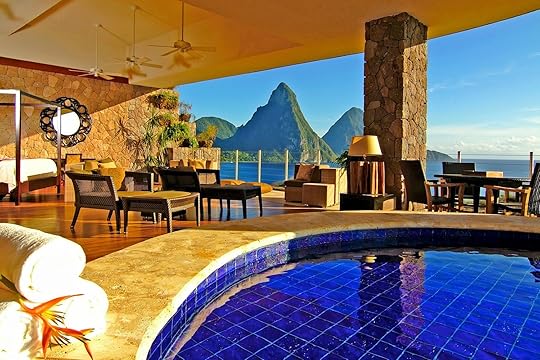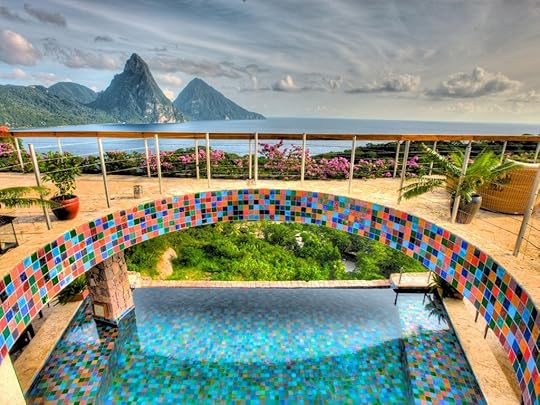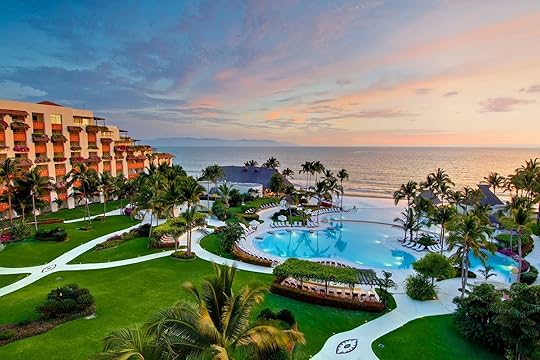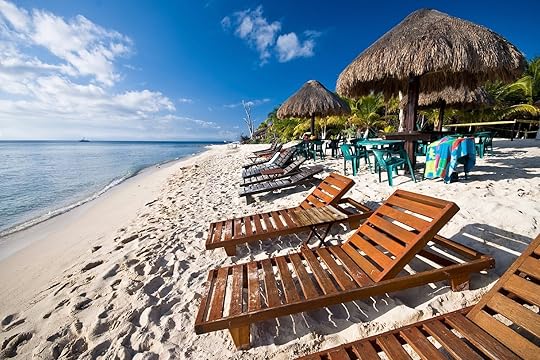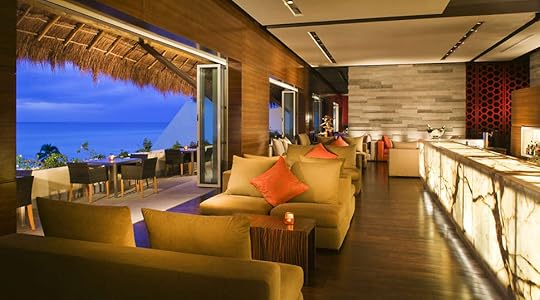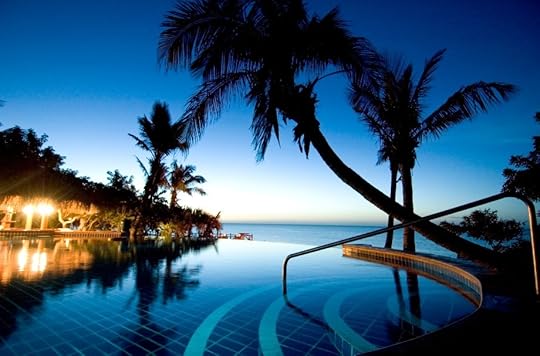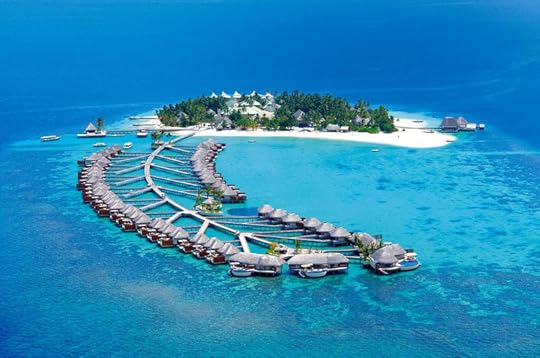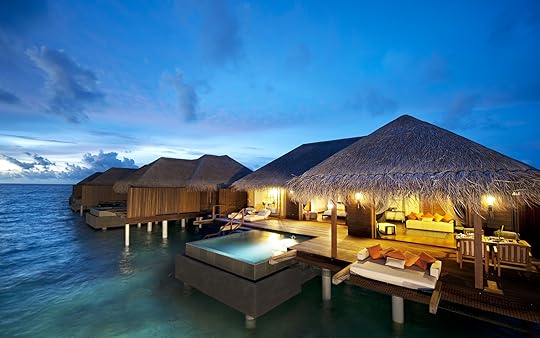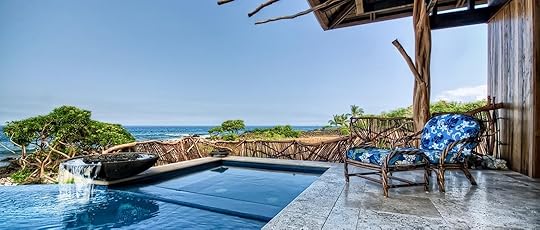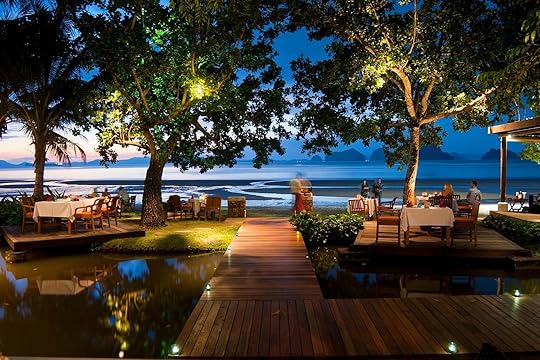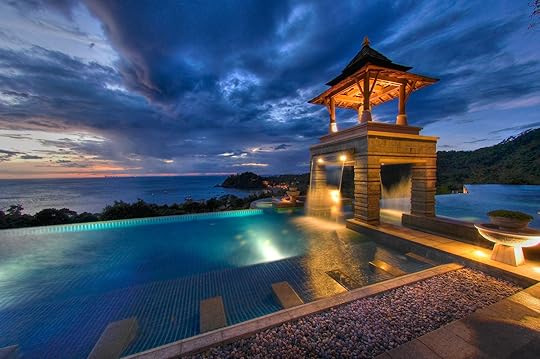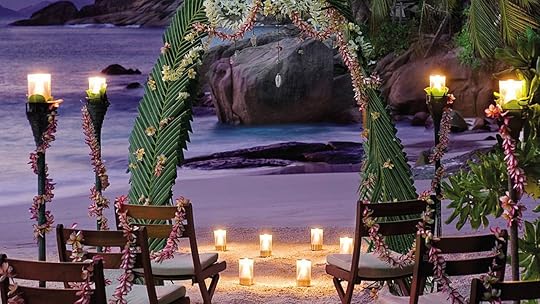Matador Network's Blog, page 2203
September 30, 2014
You've never been to Mexico City
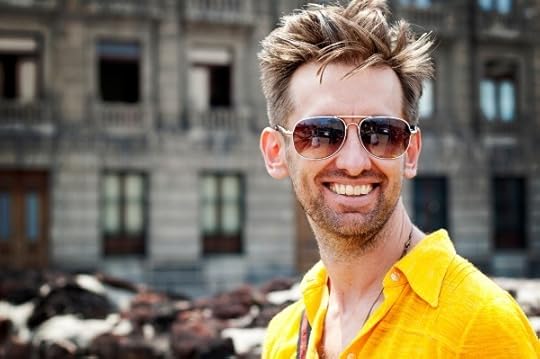
Photo: Ana Kelston
1. You imagine it to be all dirt tracks and donkeys…
Whenever Hollywood portrays Mexico it seems to show dusty roads with beat-up cars and the occasional donkey. It’s not surprising, then, that if you’ve never been to Mexico’s capital, you might be expecting something similar. However, Mexico City is a bustling urban centre with over 20 million inhabitants, real roads, and lots of new cars.
2. …or an urban jungle.
Mexico City is big and urban, but there are so many green spaces and huge parks in all different corners of the city. In addition, beautiful, tree-filled plazas are everywhere.
3. You think Mexico City is poor and third world.
Mexico City is one of the most important economic centres of the Americas and one of the top 25 urban economies in the world. In fact, the country of Mexico is the world’s 14th-largest economy. Like in many large cities, there are very rich residents and very poor residents, but head to Polanco, Pedregal, and Lomas de Chapultepec and you might be very surprised by the extraordinary wealth in those parts of the city.
4. You think it’s really dangerous and that you’ll get kidnapped.
Mexico City got a nasty reputation in the ’90s for being dangerous and a hot spot for kidnappings. However, a lot’s changed since then, and most tourists are surprised by just how safe they feel. Of course, crimes do occur — it’s a big city — but it’s not the crime-infested place many seem to believe.
5. You get confused when people in Mexico simply call Mexico City “Mexico.”
For new travelers to Mexico (the country) this can be a confusing one. Are people saying they’re from Mexico the city or Mexico the country? You can imagine some of the interesting (read: ridiculously confusing) conversations that can result from this.
Note: You may also hear Mexico City referred to as D.F., Mexico D.F., the Federal District of Mexico, Chilangolandia, El Defectuoso, or La Capirucha. Now “Mexico” seems much better, right?
6. You don’t know it’s built on a lake and is in fact sinking.
When the Spanish arrived in Mexico, they found the huge, important city of the Aztecs, Tenochtitlan, built on an island on Lake Texcoco. The Spaniards constructed Mexico City over Tenochtitlan, draining the water off the lake to extend the city. Imagine, a city of 20 million built on a lake. No wonder it’s sinking at a rate of between 6 – 35cm per year.
7. You’re unaware of its elevation.
Many people arrive in Mexico City wondering why they run out of breath so quickly or sometimes feel slightly lightheaded for a day or two. The reason is that Mexico’s capital is 7,350ft (2,240m) above sea level, making it the eighth-highest capital city in the world and the highest in North America. Oh, and that’s another thing: Mexico is part of North America, not South America or Central America as many people think.
8. You haven’t heard of the floating gardens of the Aztecs.
South of Mexico City there are canals in an area called Xochimilco. Here, the Aztecs built fertile banks on the lake, in which they grew one-third of the produce needed to feed the city. These canals stood the test of time and still exist today. Nowadays, you can rent a colourful boat called a trajinera and float down the canal with friends, enjoying the music of mariachis and a cold beer or two.
9. You’re unaware that it’s the city with the most museums in the world.
According to the National Council for Culture and Arts, Mexico’s capital has more museums than any other city. Whatever your interest, be it archaeology, art, toys, or even chocolate, you’ll find a museum or two or three for you.
10. You didn’t know there’s an Aztec pyramid right in the heart of the city.
Right in the main square next to the cathedral is the Templo Mayor — huei teocalli in Nahuatl, the language of the Aztecs (or Mexica, as they were known). The Spanish built their cathedral on top of the temple, but years later parts of the temple were excavated by archaeologists. Still, much of the Aztec city of Tenochtitlan remains buried, often discovered as new metro lines are built underground. 

Travel guide to Zion National Park
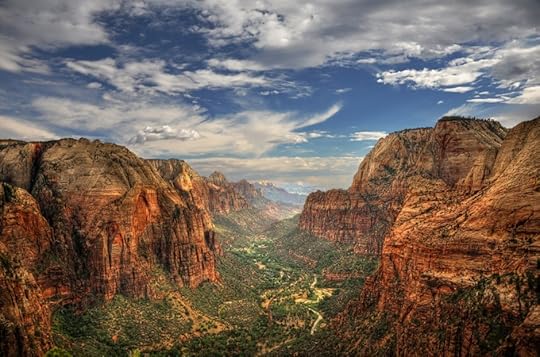
Photo: Ben Jackson
PARK DETAILS
By pretty much any measure, Zion is one of America’s most remarkable national parks. The dramatic Southwest scenery, the vibrant plant and animal life, and the array of top-tier outdoor adventure activities — both within park boundaries and the surrounding area — bring upwards of 3 million visitors a year to this southwestern corner of Utah.
The park is centered on the 15-mile Zion Canyon, where the North Fork of the Virgin River has been sculpting a channel through red-and-khaki Navajo sandstone for the last hundred million years or so. The result is one of the most striking canyons anywhere in the world. At the same time, Zion is situated at the nexus of several different geographic and ecological zones, giving it a diversity and uniqueness you won’t find in any other US park. Combine that with world-class hiking, rock climbing, overnight backpacking, canyoneering, horseback riding, and photography opps, and you start to get a sense of exactly why the park is so popular.
There are two ways into Zion: from the east (via Kanab or Bryce Canyon) and from the west (via Springdale).
The eastern route
Entering from the east gives you a fantastic introduction to the park. Following Utah State Route 9, you first encounter Checkerboard Mesa, a pockmarked sandstone pyramid that will have you scratching your head as to how it came to be. As you continue along the winding #9, you eventually reach the Zion-Mt. Carmel Tunnel, an engineering feat that took three years to complete (1927-1930). Drive slowly on approach, as there can be backed-up traffic to allow an oversized vehicle to pass through from the other direction (it’s a very narrow tunnel).
The show truly begins after you exit the tunnel and get your first look at Zion Canyon. Just try to keep your eyes on the road as you descend some incredibly scenic switchbacks to reach Canyon Junction, where you’ll turn left and follow the Virgin River toward the park entrance (visitor center) and Springdale — unless you’re staying at the Zion Lodge and already have a park permit, in which case you’d turn right.
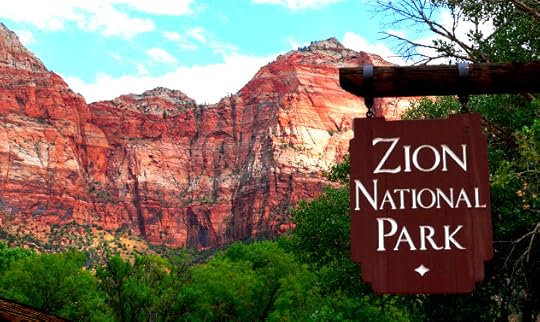
Photo: Les Haines
The western route
Driving from the west you’ll also be on SR-9, perhaps coming from St. George or Salt Lake City (I-15). This approach keeps you at canyon-floor level, from where you’ll see the sandstone cliffs gradually growing taller and more sheer as you reach the town of Springdale. Once you hit the park entrance, the views will have already reached epic status, but just wait — it only gets better as you make your way farther and farther up-canyon during your visit.
If you’re lodging outside the park, you’ll most likely want to find parking in town and take the Springdale shuttle in, as the visitor center lot fills up fast. If you’re camping or staying at Zion Lodge, continue through the park entrance with your vehicle.
The shuttle
The Zion Canyon shuttle system was implemented in 2000 as a welcome response to increasing visitation and traffic congestion on the canyon’s single road. The ability to simply sit back and take in the views out of the oversized bus windows, instead of having to concentrate on driving yourself, makes exploring Zion notably less stressful than the experience you get in parks with comparable visitation numbers in the US.
The shuttle operates April to October (and weekends in November) and takes you from the visitor center to the northernmost point of the main canyon (making nine stops along the way) and back. In the winter months, private vehicles are allowed on the canyon road.
Biking in the park
I highly recommend bringing bicycles, as they’re a fantastic way to explore the park and feel much more immersed in the grandeur of Zion. Load your bike onto the shuttle (all are equipped for this), take it up to the last stop in the park, then bike the road back toward the entrance. You take advantage of the slight downhill this way — although it certainly wouldn’t be much more difficult to ride up-canyon.
Cyclists are only allowed on paved roads and on the Pa’rus Trail, a 1.75-mile paved path between the visitor center and Canyon Junction. Taking bicycles off-road is prohibited, as is cycling through the Zion-Mt. Carmel Tunnel.
Important note: Shuttle bus drivers aren’t allowed to pass cyclists. When approached from behind by a shuttle, stop riding and let the bus by.
Park fees
Private vehicles pay $25 for a permit, which is valid for seven days. This allows the vehicle and all occupants (up to 15!) into the park. Individuals (cyclists and pedestrians) are charged $12 each, valid for seven days (15 years old and younger get in free). Entrance also includes Kolob Canyons access. A handful of days each year are “fee free” — check the park website for details.
LODGING AND CAMPING
There’s lodging of all qualities and budgets in Springdale. Zion Lodge, a historic structure designed to blend with its surroundings, which has been hosting visitors since the 1920s, is the only non-camping option inside the park.
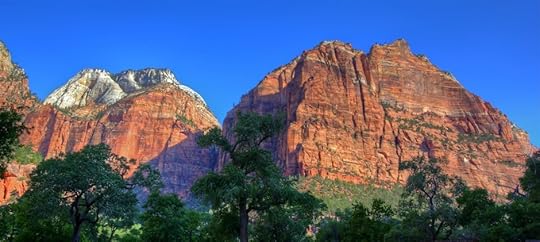
The view from Zion Lodge. Photo: Steve Jurvetson
There are two campgrounds inside the park: Watchman Campground and South Campground. Unless you’ve made reservations at Watchman, you’ll want to head to South, the first-come first-served option (arrive early in the morning for your best shot at securing a site).
Just outside the park entrance in Springdale is the Zion Canyon Campground, behind the Quality Inn. We stayed here the first night as everything inside the park was full when we arrived. It’s on the expensive side for camping (free showers though), so we took off early the next morning and scored a site at South Campground.
Tip: Be prepared for wind if you’re camping inside the park. Unfortunately for us, we had a largely mesh tent with a fly; the ubiquitous red sand blew into the tent when it got really windy, which was often, and got very annoying very quickly. If you have a tent with solid walls, pack it.
EXPLORING ZION
Each shuttle stop on the drive up Zion Canyon Scenic Drive gives access to a hike or other point of interest. This is where most of the activities and sightseeing are, so it attracts by far the most visitors, but the eastern section of the park and Kolob Canyons are equally worth a visit. First, though, we’ll look at some of the ways to explore the main canyon.
On the gentler side
Pa’rus Trail: This 1.75-mile trail is the only one in the park that’s bike- and dog-friendly (also accessible by wheelchair). It runs between the visitor center and Canyon Junction and takes in stunning canyon views along the way. You can access South Campground, the Zion Human History Museum (see below), and the Virgin River — awesome for cooling off on a hot day — from this paved path. Keep an eye open for colorful cactus flowers along the trail.
Zion Human History Museum: Definitely worth a stop if you’re interested in the geologic and cultural histories of the area. Besides exhibits, they have a very interesting 22-minute video that includes views of Zion you won’t get any other way, and which explains how the area was formed and eventually inhabited by humans. Get off at the first shuttle stop, or find it via the Pa’rus Trail (the short connecting dirt track is off limits to bikes, so make sure to get off and walk).
Grotto Trail: This is an easy walk that connects Zion Lodge and the Grotto, a green, peaceful area where you can find shade under cottonwood trees, break for lunch at a picnic table, refill your water, and use the public bathrooms. The Grotto can serve as a de facto meeting point, as other trails end and begin here as well.
Riverside Walk: At the end of the shuttle line is the Temple of Sinawava stop. From here you can walk farther north, tracing the riffled Virgin River on a paved trail past surprisingly lush hanging gardens. It’s just over a mile to where the river starts to disappear into the narrower sections of the canyon. Here you’ll see hikers outfitted in neoprene crossing the river on their way to check out the tail end of the Narrows (more on this hike below).
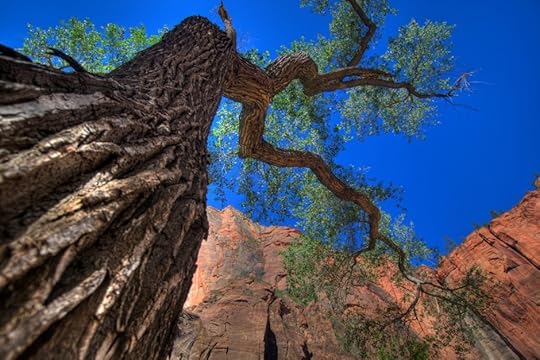
Photo: Alan Levine
On the break-a-sweat side
Emerald Pools: This classic Zion hike is broken into three sections, leaving you with plenty of options for more or less hiking: Lower, Middle, and Upper Pools. The trail actually passes behind some small waterfalls on the way to the Middle Pools, which can provide a refreshing mist on a hot day — after a good rain, the falls may be thundering. From the Middle Pools and on, views back to the canyon are magnificent. Look for the bulks of Red Arch Mountain and Lady Mountain to dominate the tableau. Allow a couple hours if you’re hiking to all the pools.
Kayenta Trail: From the Grotto, this is a steep-ish trail that leads to the Upper and Lower Emerald Pools, further expanding your hiking options in this section of the park and negating the need to backtrack. Expect more killer vistas of the lush canyon floor, threaded by the Virgin River.
Watchman Trail: It’s all about the views on this hike. You’ll be set up for excellent shots of iconic Zion sights like the Towers of the Virgin, Beehives, lower Zion Canyon, and even back to Springdale. The trail starts at the visitor center and proceeds for two miles. After an elevation gain of 450 feet, you’ll end at a viewpoint looking out on the red spire known as the Watchman.
On the adventurous side
Angels Landing: Angels Landing is one of the premier hikes in Utah, if not the entire US national park system, and as such is a “must-do” for any visitors physically fit enough and capable of handling the heights and exposure. Note that there have been a handful of deaths over the years (careless hikers) and that it’s not recommended for kids, but with care and attention it’s relatively safe. The trail is around 5.5 miles round trip, is steep, and includes many switchbacks — the Walter’s Wiggles section alone has 22. It’s a strenuous but straightforward hike to Scout Lookout, a good resting spot with an outhouse (closed when we were there in April) and spectacular views up the canyon. This is also where many hikers will turn around or wait patiently for other members of their party to complete the route.
The last portion of the hike follows a trail along a narrow ridge, many parts of it very exposed to sharp dropoffs, right to the top of Angels Landing at 5,790 feet. There are chains along the way to grasp for support; I witnessed many a white knuckle on the way up and down. If you fear heights, this is either a great way to overcome the phobia, or a terrible idea. Once you’ve made it, you’re rewarded with those views you keep seeing on all the Zion postcards — in a word, epic.
Note for climbers: There are several routes up the north face of Angels Landing. One of the more popular (and challenging) is the 13-pitch Lowe Route. Inquire at the visitor center for more details if you brought your gear.
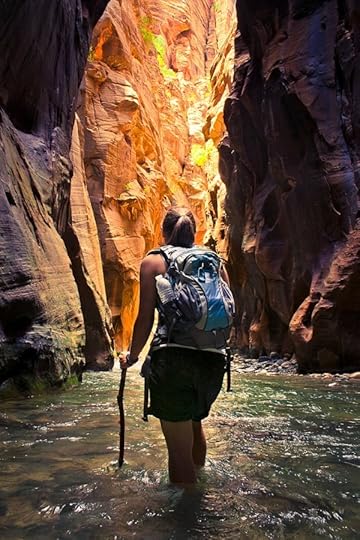
Photo: Ada Be
The Narrows: This is another hike within the park that many visitors come for specifically, and gives even Angels Landing a run for its money on the list of “America’s best hikes.” More than half of it takes place in the Virgin River over uneven ground and slippery rocks. Sections of the canyon are only 20-30 feet wide, while the walls rise to a monolithic 2,000 feet — all of which can make you feel very, very small.
For the full experience, you’ll need a permit (only 80 hikers are allowed in daily) and transportation from Springdale to the trailhead at Chamberlain’s Ranch. Shuttles can be arranged in town. The full hike is 16 miles of downstream traverse, which will take you all day to complete. Alternatively, you can hike as far as five miles up-canyon from the end of the Riverside Walk trail without a permit (proceeding any farther than Big Spring in the upstream direction is prohibited).
It’s common for the Narrows to be closed from around March to June, as spring snowmelt makes water levels too dangerous. Before attempting the hike, stop at the visitor center to check the forecast and potential for flash floods, and be prepared with the right footwear, clothing, and gear.
West Rim Trail: For those who want to get away from the crowds within the main canyon, this 16-mile hike to Lava Point (one of the highest elevations in the park) is a sure bet. It starts at the Grotto and follows the same route as Angels Landing, then veers off from Scout Lookout. Once you ascend out of the main canyon, you’ll be in a high alpine environment with more comprehensive views of the park than most visitors ever get.
If you’re backpacking (it’s suggested to overnight if you’re hiking the entire trail from the canyon) get a wilderness permit from the visitor center. The hike can also be done from the opposite end, from Lava Point down into the canyon, as a long day hike.
The eastern side
The eastern portion of the park is accessed either from the East Entrance on SR-9 or through the Zion-Mt. Carmel Tunnel. There’s great hiking here, which gives you a true sense of what this national park has to offer beyond the canyon that bears its name. Try the Canyon Overlook Trail (views of Pine Creek Canyon and lower Zion Canyon) and the East Rim Trail, a long, ascending route through ponderosa forest that skirts the canyon rim before connecting up with the Observation Point Trail (accessible from the main canyon) and descending over 2,300 feet to Weeping Rock.
Kolob Canyons
This section of Zion, northwest of the main park, is seen by a small fraction of overall visitors, but shouldn’t be missed if you have the time — especially if you’re after more peace and quiet. The entrance is off I-15 (exit 40), and there’s a separate visitor center where you can pay for park access, or present your pass if you already have one. Wilderness permits can be obtained here for overnight backpacking trips.
Scenic drive: A 5-mile scenic drive ends at Kolob Canyons Viewpoint, where you can get out to stretch your legs and walk a short trail for a closer look at your surroundings — which, in many places, mirror what’s on offer in the main canyon.
Taylor Creek Trail: This is a great moderate hike that follows and crisscrosses Taylor Creek into a narrow box canyon. If you only have time for one hike, make it this one. The trail passes old and abandoned homestead cabins built in the 1930s and ends at Double Arch Alcove, an immense amphitheatre with colorful streaks from the minerals in the rock. Allow four hours roundtrip.
Kolob Arch via La Verkin Creek Trail: At 287 feet long and with a thickness of 75 feet, Kolob Arch is one of the largest natural arches in the world. The 14-mile hike to reach it takes around eight hours — pack a tent and register for a wilderness permit so you can overnight at one of a number of sites along the trail.
Canyoneering
No question — my favorite part of our visit was the canyoneering trip we took with Zion Adventure Company. My partner and I were fortunate to get a guide to ourselves, who took us to a wet canyon for a day of descending into and hiking out of a narrow canyon with running water. The fact that there’s so much canyoneering — as well as hiking, climbing, and biking — to be done outside the park is one of Zion’s best-kept secrets. I highly recommend booking a guided trip.
Springdale
For a town of 500, Springdale has an amazing breadth of amenities — no surprise, though, as it accommodates a good bulk of the close to 3 million Zion visitors per year. A comprehensive town guide would be an entirely different article, but I’ll highlight a few things we enjoyed while staying in the area for a week.

Read more about Springdale: 5 Utah towns on the edge of spectacular nature
Cafe Soleil was our go-to spot for great breakfast, lunch, and coffee. I was especially convinced after meeting a local and being told this is where a lot of residents go.
Sol Foods Supermarket has a great deli at the back to get fresh sandwiches to take with you on your day trips. They also have a nice selection of freshly baked goods. Right next door is their hardware store (Sol Foods Hardware), where you can pick up all sorts of items, from water filters to camping gear to auto and RV supplies. There’s a small used bookstore as well — it truly is a one-stop shop.
The Canyon Community Center is the place to find out what’s happening locally and join any number of fitness classes. It’s also excellent for meeting Springdale residents and taking the pulse of the area. 
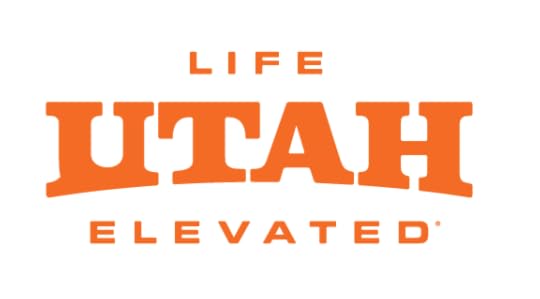 This post was proudly produced in partnership with Utah, home of The Mighty 5®.
This post was proudly produced in partnership with Utah, home of The Mighty 5®.

September 29, 2014
16 giveaways you're from Melbourne

Photo Credit: colinlogan via Compfight cc
1. Speed cameras will never deter you.
To you, speed cameras are a game of good cop /bad cop; you have a mental map where all speed cameras are on the highways, and when in suburban areas if someone flashes their lights you know to slow down because there is one hiding in the bushes up ahead.
2. You’re constantly warned of skateboarding rhinos.
You’re not exactly sure where these rhinos are but find it mildly amusing that Yarra Trams insists you look out for them.
3. You believe the crazier someone looks, the wiser they are.
The crazier you look in a Melbournian’s eyes — long beards, nipple piercings, tattoos, blue hair — the wiser and more intelligent you are perceived.
4. You’re naive to the world of sport outside AFL.
When outsiders mention football, you think they are talking about Aussie Rules so you ask them what team they “barrack” for.
5. You’re militant about how to correctly pronounce Melbourne.
You get this uncontrollable urge to correct foreigners who pronounce our city’s name incorrectly — “It’s not born as in a baby was born, it’s pronounced burn!”
6. You always try to buy foods and products made inside Australia…except beer.
7. You’re a social butterfly.
Your schedule is always booked a month ahead, usually with upcoming modern festivals such as the Victoria Night Market, Falls Festival, the Flemington carnival (just to name a few) and even the Melbourne Zombie Shuffle because there is no excuse too bizarre to have another drink.
8. You know where the best dumplings are…
…and you feed your child sushi and you always have cravings for bubble cup. You get your Spanish donuts from that interesting little van parked on the side of the road at the Victoria Market, and you head to Laverton Market for the best hot jam donuts.
No matter how full you are, you never pass up South Melbourne Dim-Sims, and Lygon Street is just around the corner if you’re craving Italian food. Chapel Street is for cocktails and Richmond is for alternative coffee and cafes. You know that little van in that creepy car park lit by one orange street light has the best garlic lamb kebabs. You love food and love that you can get whatever you need at 3am after a hard night on the dance floor.
9. You’re a show-off.
You love it when outsiders ask for directions; you’ll take any chance you get to show off how well you know your city and also to prove that people from Melbourne are so much friendlier than people from Sydney.
10. You believe graffiti is a sign of community.
You know where the trendiest areas are outside of Melbourne, the more street art, the trendier the area. If you end up in Frankston you are outside civilisation and should turn back immediately!
11. You’re paranoid.
You’re constantly paranoid about jaywalking, littering, putting your feet on the seats on public transport, urinating in public, and are always wondering if you have put enough money on your myki card all of which could land you a hefty fine.
12. Your humour knows no limits.
Not to be fooled by the kindhearted Melbournian personalities, you have a sick sense of humour which usually revolves around racism, sexism, and anything with and ism that is politically incorrect, and especially think our Government is a long running joke… all in good humour of course.
13. You get cranky when foreigners choose Sydney over Melbourne.
When you meet someone from another country who has visited Australia you always ask where in Australia they have been, hoping, wishing, praying they say Melbourne. But if they say Sydney you bitch about how terrible Sydney is compared to Melbourne and how they missed out because Melbournians would have shown them a damn good time.
14. You never miss breakfast.
The trendiest and most important meal of the day to a Melbournian is Breakfast. Nothing beats eggs, toast, bacon, and fried tomatoes tossed up in a salad, or on Turkish bread, with a large latte or two in a cosy little café, usually with strange and/or disturbing art on the walls to get the brain pumping.
15. You think this post is funny but totally closed minded.
A real Melbournian would concur everything this article states and describe it as closed minded and generalistic, after poking fun at themselves first — of course. 

Truthfully, I miss shopping in socialist China
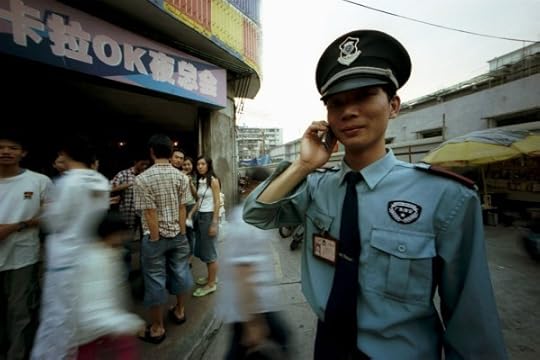
Photo: Willem Velthoven
“Aiyaaaaaa!” the Chinese shopkeeper shrieked, chewing on her toothpick and then spitting on the floor, just inches away from my shoe. “Ni yao bu yao?” (Do you want it or not?)
Before I could answer, she put the box back on the shelf behind her and started walking away. “I just wanted to take a look at the water thermos before I buy it,” I offered in my politest Mandarin. With her back to me, the shopkeeper yelled, “If you want to buy, buy. What’s there to look at anyway? Don’t waste my time.” She then turned up her radio, took a swig out of her glass jar filled with hot water and floating tea leaves, and ignored me with such disdain that my 19-year-old self almost broke down in tears. Shopping in Beijing in 1990 required a thick skin.
Much has changed since then. Shiny, air-conditioned malls, name brands like Gucci and Levi’s, and cheerful shop girls make shopping in China’s major cities no different than the experience in any other global cosmopolitan center. While this change reflects a healthy increase in peoples’ standards of living, I have to admit I’m nostalgic for the era before the forces of the free market completely took over in China.
That is, before McDonald’s created a generation of overweight children, Walmart introduced the idea of yogurt in three dozen flavors to a lactose-intolerant nation, and IKEA became a popular hangout for senior citizens looking for free coffee. The truth is I miss shopping in socialist China, when dreary state-run stores were the only game in town.
Back when I first lived in Beijing, shopping was never referred to as entertainment or a leisure activity. It was a task that elicited trepidation. My fellow foreign exchange student friends and I called the shopkeepers the “Foo” — short for fuwuyuan, the Chinese word for customer service provider.
The Foo had a decidedly non-service-oriented attitude, however. They were typically surly, condescending, and quite adept at chasing customers away. My friends and I exchanged intel on which places had the most benign Foo, and which places required a few shots of bai jiu to strengthen our resolve. Shopping was sort of like a game of strategy back then — we had to figure out how much we really needed something, and the emotional risks we were willing to take to acquire those goods.
Looking back, the Foo were a reflection of the economic policies of the time. They didn’t have to have any skills or interest in what they were doing — they were typically assigned these roles as part of their collective responsibility. Whether or not they sold anything or made shoppers feel good about coming to their store was irrelevant to their job security and pay. They could work really hard at their jobs or they could ignore customers and talk amongst themselves — either way, they could never get fired. That was the essence of China’s “iron rice bowl” policy — no matter what, everyone had the right to work and eat from the collective rice pot. But the privilege of eating out of that one bowl didn’t exactly inspire excellence.
They bullied me, but they stood for sheer honesty. They didn’t try to push products they didn’t believe in. They didn’t try to flatter me into buying ill-fitting outfits in order to make commission.
What made things difficult for the shopper was that the state-run stores were designed to give the Foo complete access to all goods, as everything was kept behind the counters or locked away in glass cases. Back then, there were no familiar global brands like Nestle or Levi’s available. What the Foo were in charge of was a hodge-podge collection of shoddily made goods from Eastern Europe or China’s own state-run factories. Yet the Foo guarded their odd assortments of soaps and pens and ashtrays in socialist propaganda packaging as if they were the contents of King Tut’s tomb. Nobody touched anything without the Foo’s help. And if they weren’t in the mood, tough luck. We were met with scowls and complaints that we were wasting their time and would ruin the packaging if we fondled the products. The Foo were the gatekeepers to the world of socialist goods.
There were a few exceptions back in the 1980s and early 1990s. For us expats dying for familiar goods, the Friendship Store was our Mecca. There, we found Pringles and honest-to-goodness Snickers bars, as well as Bayer aspirin and tampons with brands we felt were legit. While the selections were still displayed under glass cases, the Foo at the Friendship Store had clearly received the memo about customer service. And if not, directives aimed at curtailing typical Foo behavior were hung up on the store walls — Be polite to customers, Do not spit in the stairwell, and Let’s show our best face to the world!
Despite its name, however, the Friendship Store was not a friend to all. Only foreign passport holders were allowed in. It was heavily guarded by Chinese who were supposed to, well, keep out the majority of Chinese citizens.
Over the last two decades, China has dramatically transformed its economy. And with increased foreign investment and the shift to a capitalist system, The Chinese themselves are no longer forbidden from entering the stores and five-star hotels in their own country. In fact, Chinese consumers are excelling in just about everything these days. They are now the world’s biggest spenders in terms of luxury products, cars, overseas tourism, and online purchases. The list of superlatives goes on and on.
And so, the dreary state-run stores of the past have had to transform themselves, or give way to the rows of luxury boutiques which now line shopping areas in all of China’s major cities. Gone are the suspect-looking products manufactured in state-run factories. Today’s Chinese consumers have access to Burberry, Louis Vuitton, and Porsche. Those who can’t afford these luxuries can participate in the equally strong shadow economy of copycat products. Can’t afford an iPhone? Try a HiPhone.
But in this new China, the Foo have no place. They have been replaced by a new generation of cute, well-groomed, service-oriented shop girls who greet customers with smiles and good naturedly wrap up purchases in pastel colored tissue paper. They help instead of scowl. They encourage instead of ignore. With their flawless makeup, manicured nails, and high heels, they are the proud ambassadors of the New China, the one in which socialist ideology has been replaced by a consumerist ideology.
Don’t get me wrong, I don’t think Chinese people were better off back then. And who am I to begrudge anyone their right to buy gorgeous products in modern places? But shopping in China these days is an utterly forgettable experience. Sure, the stores are pretty, but when I’m in a mall in Beijing or Shanghai, I might as well be in any other hyper-developed Asian city, like Seoul or Singapore or Tokyo. The shop girls are polite and helpful but devoid of any memorable traits. They yell “welcome” as automatically as robots, and bow to customers when they enter and leave — the ultimate sign of subservience, imported from Japan. The Foo of Socialist China would never have stood for such behavior. They would have chewed on their toothpicks while pretending not to understand me, sighed heavily, and simply ignored me.
So why am I nostalgic for the kind of shopping experience the Foo represented? Yes, they made the desire to buy something more of a struggle than a pleasure. Yes, they sometimes left me tongue-tied and on the verge of tears. But at the same time, the Foo made me question — really question — whether I needed something or not. There was no such thing as an impulse buy in Foo-land. Interacting with them required conviction. And quick-witted Chinese language skills. They bullied me, but they stood for sheer honesty. They didn’t try to push products they didn’t believe in. They didn’t try to flatter me into buying ill-fitting outfits in order to make commission. While my Chinese teachers taught me the luminous qualities of ancient poetry, I credit the Foo for teaching me how to be a better, tougher, more discerning consumer. 

A touch of nostalgia for socialist China

Photo: Willem Velthoven
“Aiyaaaaaa!” the Chinese shopkeeper shrieked, chewing on her toothpick and then spitting on the floor, just inches away from my shoe. “Ni yao bu yao?” (Do you want it or not?)
Before I could answer, she put the box back on the shelf behind her and started walking away. “I just wanted to take a look at the water thermos before I buy it,” I offered in my politest Mandarin. With her back to me, the shopkeeper yelled, “If you want to buy, buy. What’s there to look at anyway? Don’t waste my time.” She then turned up her radio, took a swig out of her glass jar filled with hot water and floating tea leaves, and ignored me with such disdain that my 19-year-old self almost broke down in tears. Shopping in Beijing in 1990 required a thick skin.
Much has changed since then. Shiny, air-conditioned malls, name brands like Gucci and Levi’s, and cheerful shop girls make shopping in China’s major cities no different than the experience in any other global cosmopolitan center. While this change reflects a healthy increase in peoples’ standards of living, I have to admit I’m nostalgic for the era before the forces of the free market completely took over in China.
That is, before McDonald’s created a generation of overweight children, Walmart introduced the idea of yogurt in three dozen flavors to a lactose-intolerant nation, and IKEA became a popular hangout for senior citizens looking for free coffee. The truth is I miss shopping in socialist China, when dreary state-run stores were the only game in town.
Back when I first lived in Beijing, shopping was never referred to as entertainment or a leisure activity. It was a task that elicited trepidation. My fellow foreign exchange student friends and I called the shopkeepers the “Foo” — short for fuwuyuan, the Chinese word for customer service provider.
The Foo had a decidedly non-service-oriented attitude, however. They were typically surly, condescending, and quite adept at chasing customers away. My friends and I exchanged intel on which places had the most benign Foo, and which places required a few shots of bai jiu to strengthen our resolve. Shopping was sort of like a game of strategy back then — we had to figure out how much we really needed something, and the emotional risks we were willing to take to acquire those goods.
Looking back, the Foo were a reflection of the economic policies of the time. They didn’t have to have any skills or interest in what they were doing — they were typically assigned these roles as part of their collective responsibility. Whether or not they sold anything or made shoppers feel good about coming to their store was irrelevant to their job security and pay. They could work really hard at their jobs or they could ignore customers and talk amongst themselves — either way, they could never get fired. That was the essence of China’s “iron rice bowl” policy — no matter what, everyone had the right to work and eat from the collective rice pot. But the privilege of eating out of that one bowl didn’t exactly inspire excellence.
They bullied me, but they stood for sheer honesty. They didn’t try to push products they didn’t believe in. They didn’t try to flatter me into buying ill-fitting outfits in order to make commission.
What made things difficult for the shopper was that the state-run stores were designed to give the Foo complete access to all goods, as everything was kept behind the counters or locked away in glass cases. Back then, there were no familiar global brands like Nestle or Levi’s available. What the Foo were in charge of was a hodge-podge collection of shoddily made goods from Eastern Europe or China’s own state-run factories. Yet the Foo guarded their odd assortments of soaps and pens and ashtrays in socialist propaganda packaging as if they were the contents of King Tut’s tomb. Nobody touched anything without the Foo’s help. And if they weren’t in the mood, tough luck. We were met with scowls and complaints that we were wasting their time and would ruin the packaging if we fondled the products. The Foo were the gatekeepers to the world of socialist goods.
There were a few exceptions back in the 1980s and early 1990s. For us expats dying for familiar goods, the Friendship Store was our Mecca. There, we found Pringles and honest-to-goodness Snickers bars, as well as Bayer aspirin and tampons with brands we felt were legit. While the selections were still displayed under glass cases, the Foo at the Friendship Store had clearly received the memo about customer service. And if not, directives aimed at curtailing typical Foo behavior were hung up on the store walls — Be polite to customers, Do not spit in the stairwell, and Let’s show our best face to the world!
Despite its name, however, the Friendship Store was not a friend to all. Only foreign passport holders were allowed in. It was heavily guarded by Chinese who were supposed to, well, keep out the majority of Chinese citizens.
Over the last two decades, China has dramatically transformed its economy. And with increased foreign investment and the shift to a capitalist system, The Chinese themselves are no longer forbidden from entering the stores and five-star hotels in their own country. In fact, Chinese consumers are excelling in just about everything these days. They are now the world’s biggest spenders in terms of luxury products, cars, overseas tourism, and online purchases. The list of superlatives goes on and on.
And so, the dreary state-run stores of the past have had to transform themselves, or give way to the rows of luxury boutiques which now line shopping areas in all of China’s major cities. Gone are the suspect-looking products manufactured in state-run factories. Today’s Chinese consumers have access to Burberry, Louis Vuitton, and Porsche. Those who can’t afford these luxuries can participate in the equally strong shadow economy of copycat products. Can’t afford an iPhone? Try a HiPhone.
But in this new China, the Foo have no place. They have been replaced by a new generation of cute, well-groomed, service-oriented shop girls who greet customers with smiles and good naturedly wrap up purchases in pastel colored tissue paper. They help instead of scowl. They encourage instead of ignore. With their flawless makeup, manicured nails, and high heels, they are the proud ambassadors of the New China, the one in which socialist ideology has been replaced by a consumerist ideology.
Don’t get me wrong, I don’t think Chinese people were better off back then. And who am I to begrudge anyone their right to buy gorgeous products in modern places? But shopping in China these days is an utterly forgettable experience. Sure, the stores are pretty, but when I’m in a mall in Beijing or Shanghai, I might as well be in any other hyper-developed Asian city, like Seoul or Singapore or Tokyo. The shop girls are polite and helpful but devoid of any memorable traits. They yell “welcome” as automatically as robots, and bow to customers when they enter and leave — the ultimate sign of subservience, imported from Japan. The Foo of Socialist China would never have stood for such behavior. They would have chewed on their toothpicks while pretending not to understand me, sighed heavily, and simply ignored me.
So why am I nostalgic for the kind of shopping experience the Foo represented? Yes, they made the desire to buy something more of a struggle than a pleasure. Yes, they sometimes left me tongue-tied and on the verge of tears. But at the same time, the Foo made me question — really question — whether I needed something or not. There was no such thing as an impulse buy in Foo-land. Interacting with them required conviction. And quick-witted Chinese language skills. They bullied me, but they stood for sheer honesty. They didn’t try to push products they didn’t believe in. They didn’t try to flatter me into buying ill-fitting outfits in order to make commission. While my Chinese teachers taught me the luminous qualities of ancient poetry, I credit the Foo for teaching me how to be a better, tougher, more discerning consumer. 

44 of the most epic beach hotels
The incredibly beautiful InterContinental Bora Bora is notable for its overwater bungalows on the Pacific and a world-class spa. (via, via)
2. Qualia Resort, Hamilton, Australia
Hamilton Island in the Whitsunday Archipelago in Australia is perhaps best known for its yachting regattas, but it also happens to sit near incredible diving on the Great Barrier Reef. The Qualia Resort also offers private chefs, private bars, and private beach drop-offs. (via, via)
3. One & Only Palmilla, Mexico
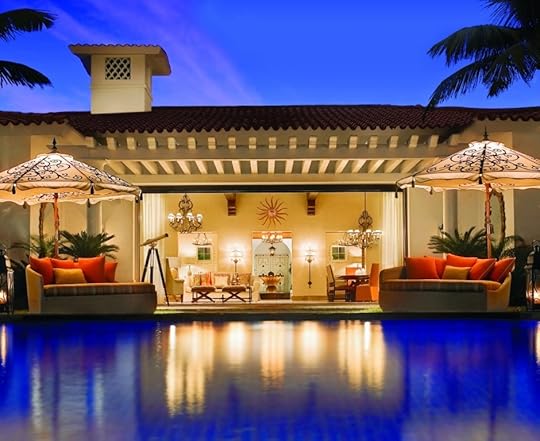
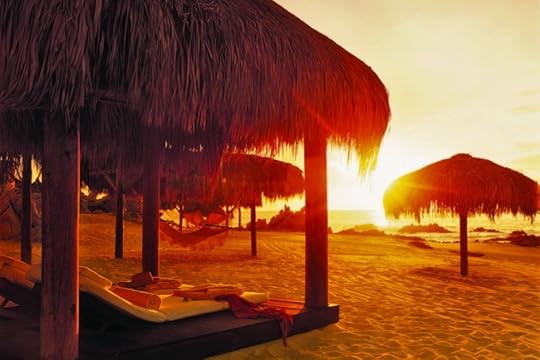

The One & Only Palmilla serves “welcome tequila” when you walk through the door. If you book a villa, free “sunset hour” margaritas with Mexican canapes and an iPhone to call your personal butler are included. (via, via, via, via)
4. Conrad Maldives Rangali Island
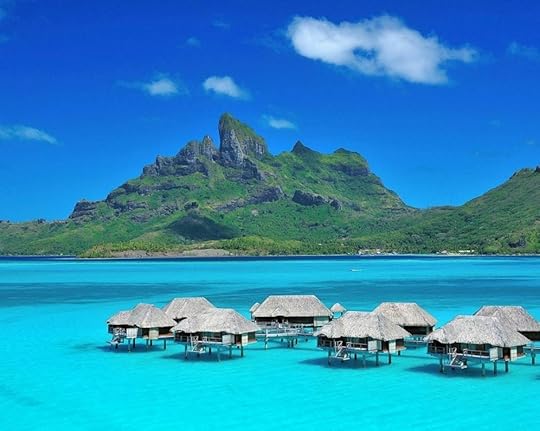
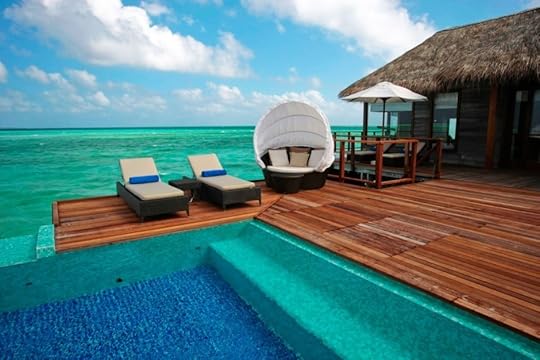
Reachable by seaplane, the Conrad Maldives is the perfect hotel for ocean wildlife fanatics. It has an underwater restaurant and excursions in private submarines, as well as glass-bottom boats and snorkeling. (via, via, via)

See more like this: 48 epic dream hotels to visit before you die
5. Maia Luxury Resort and Spa, Seychelles
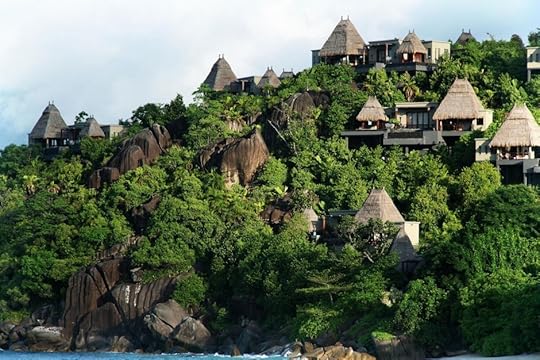
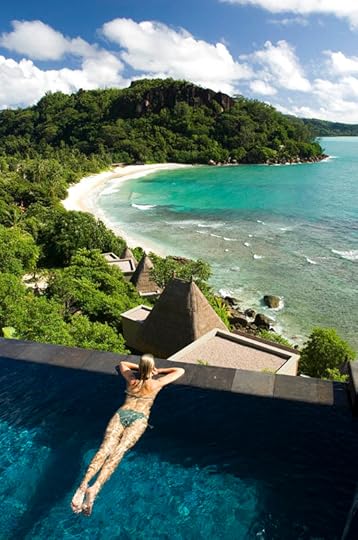
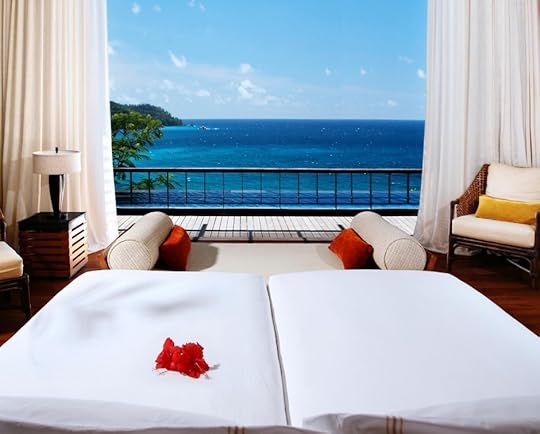
The Seychelles are located in the Indian Ocean, around 1,000 miles due east of Tanzania, and they’re absolutely beautiful. The Maia Resort not only sits on the water on the island of Au Cap, but it also has butler service and the island’s only gourmet eatery. (via, via)
6. Ladera Resort, St. Lucia
Perched on a mountain a thousand feet above the beach, the Ladera Resort might be the most scenic place on our list. The villas have their own private plunge pools, and were purposely built without a fourth wall so you can enjoy the sunsets. (via, via, via)
7. Centara Grand Island Resort, Maldives
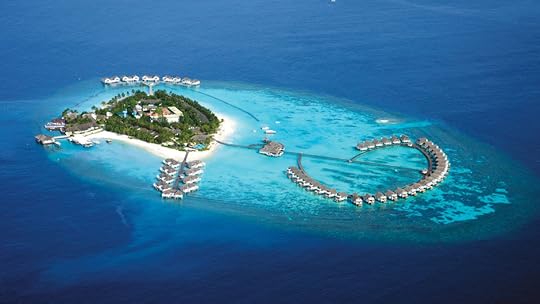
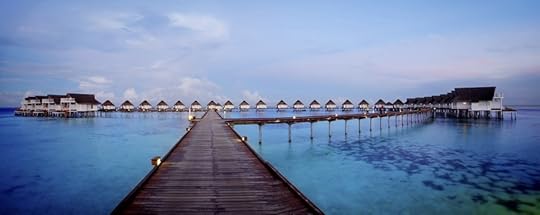
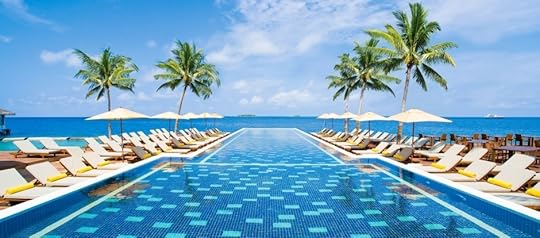
The Centara Resort in the Maldives is literally on the water. It’s built on top of an atoll, with suites and villas out over the shallows. For divers they have a house reef and a sunken ship. (via, via, via)
8. Ayana Resort and Spa, Bali
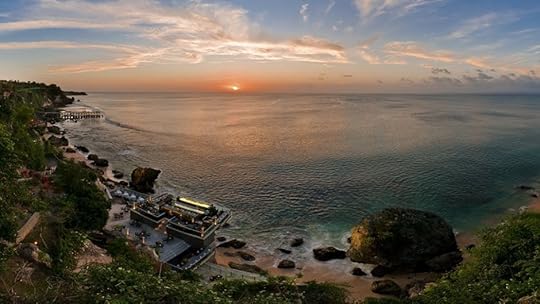
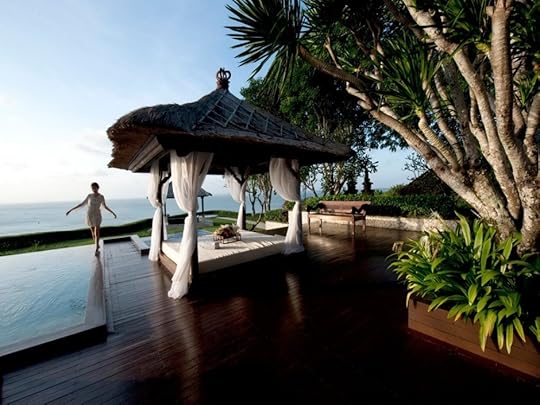
The Ayana Resort in Bali is a relatively short distance from the airport but sits on a secluded cliff overlooking the sea. It’s got one of the world’s most famous beach bars, the Rock Bar, along with 15 other restaurants and bars just in case. (via, via, via)

See more like this: The 15 most expensive hotels in the world
9. Esperanza Resort, Mexico
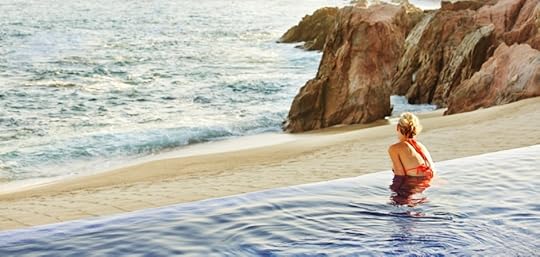
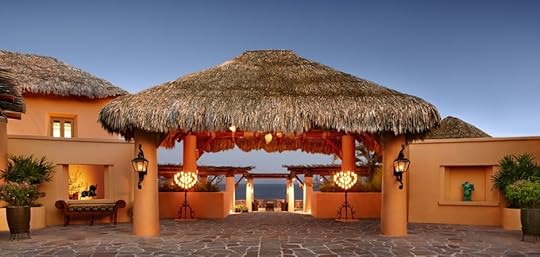
This luxury resort in Cabo San Lucas is known for its golf courses, best-in-the-region spa, and whale watching tours. (via, via)
10. Southern Ocean Lodge, Australia
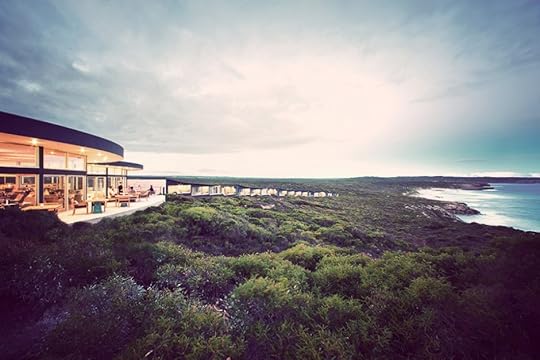
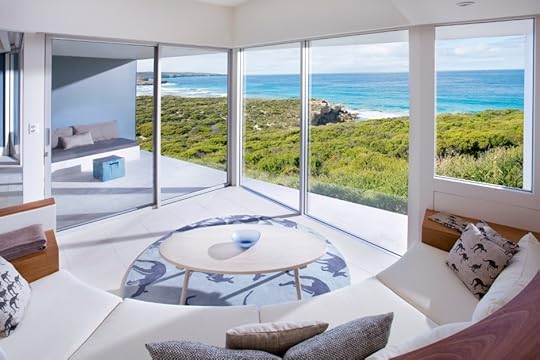
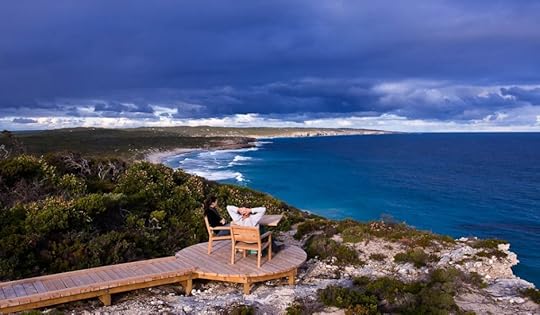
The Southern Ocean Lodge is on top of a cliff overlooking the Southern Ocean on Kangaroo Island in Australia. One of the rooms on the cliff is a giant pavilion with an outdoor terrace, panoramic windows, and heated floors. (via, via, via, via)
11. Jade Mountain, St. Lucia
Jade Mountain’s incredible architecture is matched only by its staggering scenery. The hotel’s rooms don’t have fourth walls, so they look straight out into nature, and they make liberal use of infinity pools. There are also no telephones, radios, or televisions in the building, though you can get internet if you want. (via, via, via)
12. St. Regis Punta Mita, Mexico
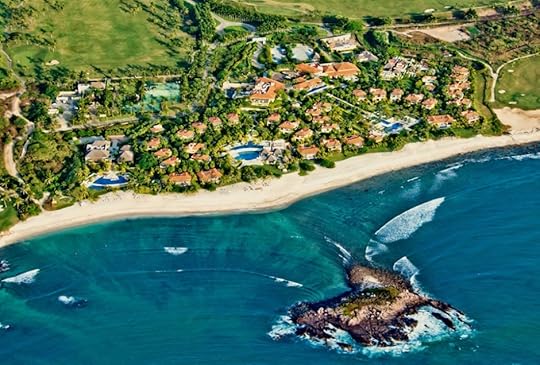
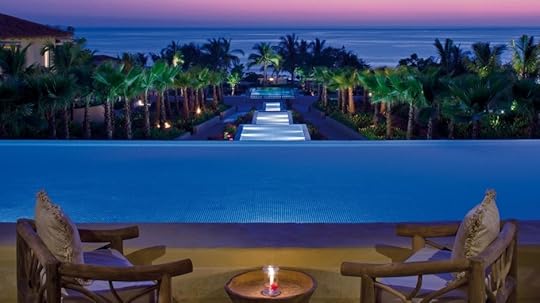
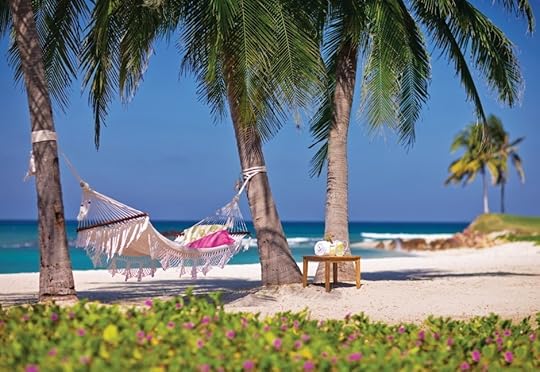
The St. Regis at Punta Mita is on the Pacific Coast of Mexico beside gorgeous white sand beaches. They have three pools (including an adults-only infinity pool), two renowned golf courses, and butler service. (via, via, via)

See more like this: 40 incredible eco-hotels to visit before you die
13. Grand Velas Riviera Maya, Mexico
The Grand Velas Riviera Maya is one of the highest-ranked family resorts in the Mexican Caribbean. They offer jungle tours and excursions where you can swim with dolphins. (via, via, via)
14. Pemba Beach Hotel, Mozambique
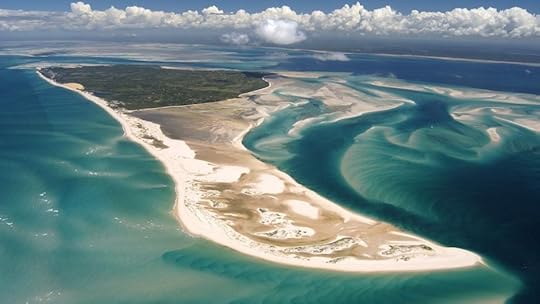
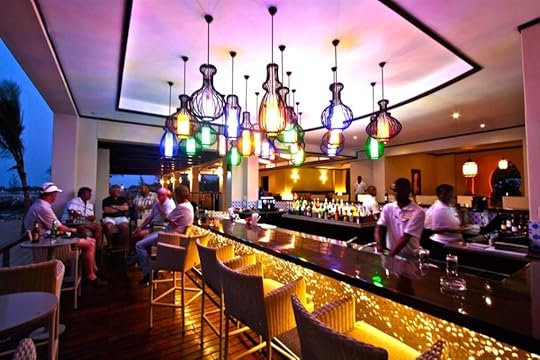
The Pemba Beach Hotel in northern Mozambique has an amazing beachside bar, gourmet restaurants, and great diving and fishing. (via, via, via)
15. W Retreat, Maldives
Aside from owning pretty much all of Fesdu Island, where the overwater villas and all the hotel amenities are built, the W Retreat in the Maldives has a totally separate, even more secluded island called Gaathafushi. (via, via)
16. Acuatico Beach Resort, Philippines
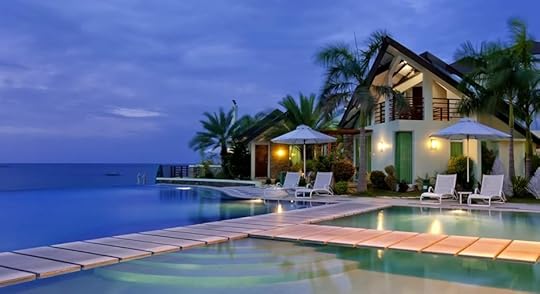
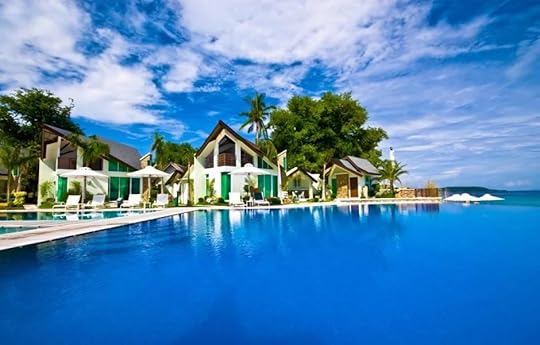
Acuatico Beach Resort, near the town of Laiya in the Philippines, has a spa, a floating bar, an infinity pool that looks right out over the ocean, and, of course, an insane beach. (via, via)
17. Rayavadee Krabi, Thailand
Set in the jungles of the Phranang Peninsula in Thailand, Rayavadee Krabi’s beach leads into Krabi Marine Park. It’s got 100 pavilions nestled in the coconut groves, a spa, and a chill-out spot alongside famous Railay Beach. (via, via)
18. Four Seasons Resort Seychelles
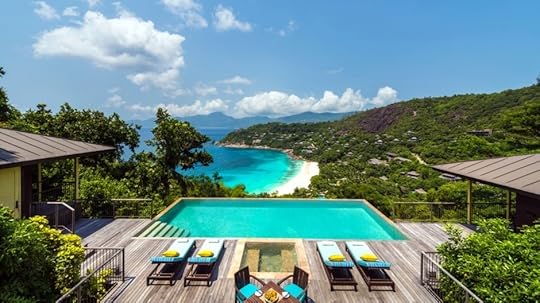

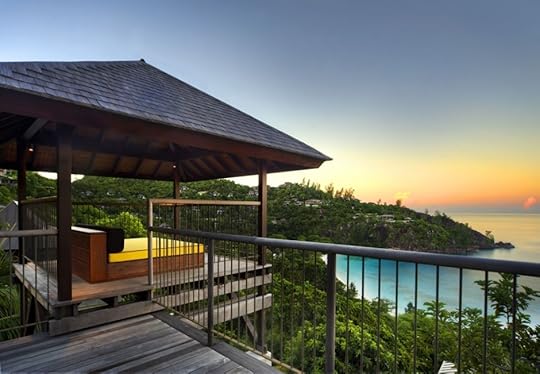
Situated just above the beach, the Four Seasons in Seychelles features treetop villas, infinity pools, deep sea fishing, snorkeling, and diving. (via, via, via, via)
See 18 more beach hotels on page 2 >>

5 things Mexicans say to avoid 'no'

Photo: Nan Palmero
Hacé clic para leer este artículo en español. Tambien podés darnos un “me gusta” en Facebook!
Mexicans are very polite and can seem downright formal compared to residents of other Spanish-speaking countries. People greet each other in elevators, on buses, and shared taxis almost always with “con permiso,” — “with your permission,” — and “propio” — “you may grant your own permission, as you don’t need mine.”
I love all this about Mexican culture. However, it took me a long time to realize that, because of all the politeness, Mexicans really struggle to say “no” and will find any number of ways to avoid the accursed word. Here are just a few examples.
1. Yes
It’s very common in Mexico that yes means no. Yes, really! Imagine leaving a business meeting with a lively “Yes!” from a potential client and never hearing from them again. Imagine inviting a friend out for drinks, them saying “Yes!” and then never turning up. Imagine asking someone to marry you and them answering with a resounding “Yes!” and…ok maybe that is taking it a little too far. If you want to live in Mexico, you need to perfect the art of deciphering the true meaning of the yes.
Example from my life:
Me: [walks into a framing shop, where I left some prints a week earlier] “Hi, are my prints ready?”
Shop Assistant: “Yes.”
Me: “Great! Can I see them?”
Shop Assistant: “Yes.” [doesn’t move]
Me: “Super, where are they?”
Shop Assistant: “Well….erm….the glass on one isn’t in place yet and the other is drying.”
Me: “So they aren’t ready?”
Shop Assistant: “Erm…well”
Me: “What you’re saying is that they aren’t ready, right?”
Shop Assistant: “Yes.”
This time the yes actually means yes.
2. Maybe
In order to decipher the yes, I suggest you start with the maybe, it can be slightly easier to determine. Maybes seem to come in two forms — the real maybe, which holds hope, and the definite-no maybe. They can be distinguished by tone; in my experience, the higher the pitch the more likely your maybe is a yes. Mexicans also have a whole plethora of words that they can use to mean maybe — tal vez, quizá, igual, estaría bien, etc. — so I warn you that just when you think you’ve got it they might hit you with a curveball.
Example from my life:
Me: “Do you want to come over for breakfast?”
Mexican friend: “Erm, ye…maybe. I have to do some things but…hmmm…maybe, that could be good, I’ll see you there”
Me: “Ok, bye.”
I make breakfast for one.
3. Thank you
The expression “No, thank you” is rarely heard in Mexico. Instead, you will hear just a very grateful sounding “Thank you.” When I first arrived in Mexico, it confused me because if someone used that tone to say thank you in England it would mean a resounding “Thank you very much!” You will mainly hear this used to let someone selling something know that you don’t want it, but, of course, you must let it seem like you are very glad they offered it to you.
Example from my life:
Person selling stuff on the beach: “Sarongs, sarongs, hats, necklaces.”
Me: “No, gracias.”
Seller: “Buy from me miss.” [shows off his wares until after about 20 minutes he moves on realizing I won’t buy anything]
Seller: “Sarongs, sarongs, hats, necklaces”
My Mexican Boyfriend: [very grateful sounding] “Gracias.”
Seller keeps walking and I nearly choke on my piña colada.
4. Estamos en contacto
“We’ll be in touch,” sounds like a phrase you might use on a bad date. Here, however, it can be used in many situations to avoid saying “No, I am not interested in what you are offering me,” without needing to let the dreaded NO pass your lips.
Example from my life:
Pushy Neighbor insisting my roommate and I move into a house she is renting: “You have to come and see it. It is so beautiful and has lots of room and it’s very secure.”
Us: “No thanks. We are very happy here.” [you are renting your brother’s house!]
Pushy neighbor: “Well, just come and see it. When works for you? I will pick you up and take you there.”
Us: “No really, thank you, but we like living here and we are still under contract.”
Pushy Neighbor: “How about Friday? I’ll wait outside at say 2?”
My clever roommate: “Of course, señora, give me your number and estamos en contacto.”
Pushy Neighbor never bothers us again.
5. Ahorita
Literally meaning “little now,” ahorita generally means that something may or may not happen in the near or distant future. For example, if a child is told to do their homework, rather than say no, they might say ahorita.
When I first arrived it confused me to no end. I asked if the ice cream seller had chocolate and she said she had run out but would be getting some “ahorita.” Me thinking, well, ahorita must mean “right now” so I waited…and I waited until I realized that ahorita, for all intents and purposes, means no. Ahorita can be interchanged with “al rato” (in a bit) to confuse the situation just a little more.
Examples from my life:
Me: “Is the doctor here?”
Receptionist: “Ahorita llega.” Translation: No, but he will be here at some indeterminate time in the future.
Me: “Would you like some cake?”
Mother in Law: “Ahorita.” Translation: No, not right now. 

10 idioms only the French understand
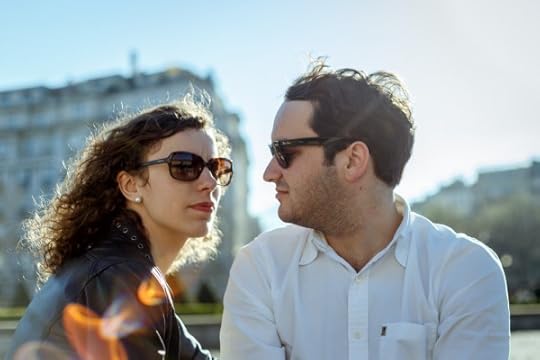
Photo: Lou_:)
1. Est-ce que je te demande si ta grand-mère fait du vélo? | Mind your own damn business
Translates literally as, “Do I ask you if your grandma bikes?” This is a rather funny (though not for the person receiving the insult) and sarcastic way to tell someone to get lost.
Example:
A: Is your divorce procedure with Ginny coming along, John?
B: Est-ce que je te demande si ta grand-mère fait du vélo?
2. Avoir un poil dans la main | To be lazy
In France, those suffering from chronic motivational deficit are said “to have a hair growing in the palm of their hand.” If it’s reached the thickness of a ponytail and you can braid it, you probably need a good coup de pied au cul (kick in the ass).
Example:
A: Can’t Teresa do it?
B: Forget it, she’s got a poil dans la main the length of a cooked spaghetti noodle.
3. Chier une pendule | To make a big fuss
Be warned! It’s a pretty rude way to tell someone to calm the freak down, but you ought to admit that “pooping out a clock” is a rather creative and effective way to describe an overblown situation.
Example:
A: Oh my God! What happened? What did you do?!
B: Jeez, you’re not going to chier une pendule just because I totaled the car, are you?
4. Se faire poser un lapin | To be stood up
Yeah, if you’ve been waiting at the café for an hour and the guy you met at the club last night still hasn’t shown up, you were probably “given a rabbit.” Move on. He must be a dink.
Example:
A: Aren’t you going to meet the blond you were grinding with last night on the dance floor?
B: Nah, man, I’m too busy pumping iron at the gym. I’ll probably lui poser un lapin.
5. Avoir une araignée au plafond | To be not quite right in the head
In France, we like to think if you’re one sandwich short of a picnic, you “have a spider hanging from the roof of your skull.” How delightfully childish of us to explain insanity by describing someone’s head to be as empty and dirty as an old attic!
Example:
A: You know the girl from Safeway, the cashier? She told me I looked like Ryan Gosling!
B: Yeah, she’s got une araignée au plafond. Didn’t you know? Sounds like it got worse over the past week, though.
6. Ne pas attacher son chien avec des saucisses | To be cheap
In France, if you “don’t tie your dog with a sausage line,” you’re cheap. We’ve got high standards for our canine friends.
7. Se faire rouler dans la farine | To be cheated
The French have trouble stepping away from food for too long, so even when we’re being cheated, we’re being “rolled in flour” like a wholesome loaf of bread in the making.
Example:
A: I slept with Rocco last night, you know, the pizza chef from La Cucina Ristorante.
B: Nice! Are you guys dating?
A: No, he hasn’t called back even though he said he would. I think I just got roulée dans la farine.
B: Quite literally…
8. Être une bonne poire | To be naïve
If you really think Rocco, the womanizing pizza maker, ever meant to call you back after last night’s events, there’s no doubt, you’re “a ripe pear.”
9. Aller faire téter les puces | To go to bed
Here’s something that’ll make you want to stay in a hostel in France! “To go let the fleas feed on you” is one of the many ways French people explain they’re going to hit the sack. You may want to check out the sheets before crashing.
10. Courir sur le haricot de quelqu’un | To piss someone off
This is one of my personal favorites. My mom uses it all the time when she wants me to stop nagging her (now, what does that say about our relationship, I wonder?)
I always picture a little person, breathless, “running on a long green bean” (a yardlong one, I’m guessing).
Joke aside, back in the day, un haricot was a slang term for a toe. Now it all makes sense — if you’re running on someone’s toe, they’re likely to get annoyed, indeed.
Example:
Enough already! All these crazy French idioms are starting to me courir sur le haricot. 

5 epic Wyoming road trips
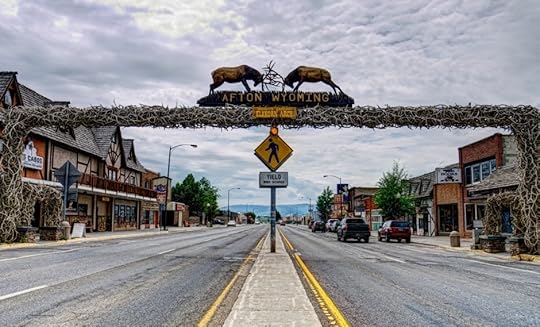
Afton, Wyoming and the “world’s largest elkhorn arch.” Photo: david__jones
WYOMING IS WHERE THE HIGH PLAINS meet the Rocky Mountains to form some of the most staggeringly beautiful scenery in the entire country. The state is probably best known for Yellowstone National Park, but that’s just a small part of what Wyoming has to offer. You’ve got the Grand Tetons, the Bighorns, the Sierra Madre, Jackson Hole, the Winds…there are just a ton of places to go skiing, fishing, hiking, rock climbing, and paddling throughout the state.
On top of recreation, Wyoming is home to the true Old West. The Oregon Trail passed through its territory, and many famous outdoorsmen (like Buffalo Bill Cody) and outlaws (like Butch Cassidy and the Sundance Kid) made names for themselves here. This heritage is still reflected in Wyoming’s culture — its festivals and its rodeos — as well as a large number of museums.
Wyoming’s low population density (it’s the country’s tenth-largest state but has the smallest population) results in a lot of lovely small towns and incredible natural scenery — a combination that supports some truly epic road trips. Most of the itineraries below are meant for late spring to early fall, when the roads are (relatively) snow free. Unless you’re traveling with skis / board in tow…but that’s another article.
1. The northern line
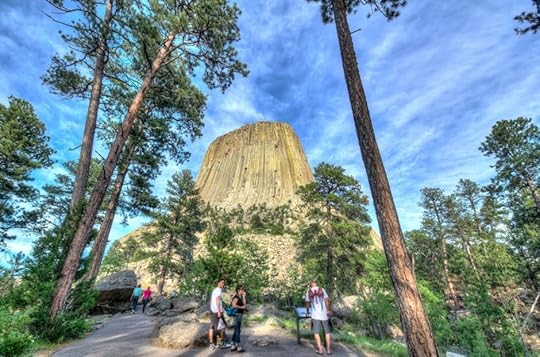
Devils Tower National Monument. Photo: m01229
Start and end: Starts in the Black Hills / South Dakota border, ends in Yellowstone National Park
Key spots: Sundance, Devils Tower, Bighorn Mountains, Red Gulch/Alkali Scenic Backway, Cody, Beartooth Highway, Yellowstone National Park
Trip length: 450 miles, about 8.5 hours of driving
Duration: 5-10 days
Features: Iconic landmarks, historic towns, incredible canyons, hiking and rock climbing, and national parks
Starting on the South Dakota border in the Black Hills, kick off your drive with a stop at Devils Tower and a hike around this distinctive national monument. The formation itself is also one of North America’s premier crack climbing sites.
Stay a night in the town of Sundance, from where you can make excursions into the Bear Lodge Mountains before heading east, past the Keyhole Reservoir, and on to the Bighorn Mountains and national forest of the same name — one of the oldest federally protected forest areas in the country.
Exit the northwest corner of the forest on the Red Gulch/Alkali Scenic Backway, a 34-mile unpaved route through beautiful badland-style terrain with stop-offs to see dinosaur tracks and petroglyphs. Stay in Lovell, the “Rose Town of Wyoming,” or continue on to Cody (as in Buffalo Bill) for a visit to the Buffalo Bill Center of the West.
To get from Cody to Yellowstone, hop over the border to Red Lodge, MT and get on the Beartooth Highway (212) going south into the park via the northeast entrance. This All-American Road is the highest in Wyoming and features some out-of-this-world views.
2. The old Park-to-Park Highway
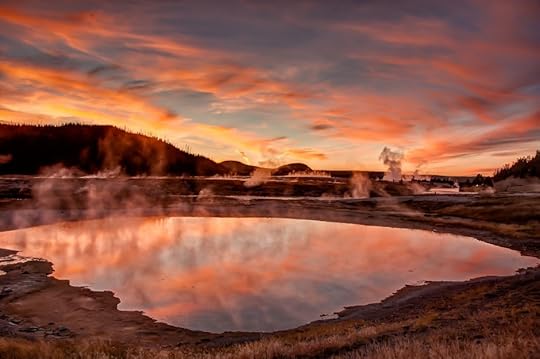
Yellowstone at sunset. Photo: Bill Young
Start and end: Starts in Cheyenne, ends in Yellowstone National Park
Key spots: Cheyenne, Fort Laramie, Oregon Trail Ruts, Boysen State Park, Wind River Canyon Scenic Byway, Thermopolis hot springs, Buffalo Bill Cody Scenic Byway, Yellowstone National Park
Trip length: 550 miles, about 10 hours of driving
Duration: 7-10 days
Features: World-class parks, sites and museums from the historic Old West, fishing, hot springs
The Park-to-Park Highway was a massive auto circuit through the major national parks of the American West. This trip takes you along much of Wyoming’s section of the route, starting in the state capital, Cheyenne. The city hosts a number of great festivals throughout the year, including an Oktoberfest. Heading northwest, check out the Fort Laramie National Historic Site — which you’ll probably remember from the Oregon Trail computer game. There are actual wagon ruts from the Oregon Trail just to the north in Guernsey.
Catch a rodeo in Casper, and then make your way to Boysen State Park for some fishing (walleye and trout) or water skiing. Next, it’s on through the beautiful Wind River Canyon Scenic Byway to Thermopolis for a day of unwinding in the area’s natural hot springs. From there, head to Cody, Wyoming — founded by Buffalo Bill Cody — and drive the Buffalo Bill Cody Scenic Byway to the east entrance of Yellowstone National Park. You could theoretically do this drive in a few days, but it deserves at least a week.
3. The mountain-to-mountain route
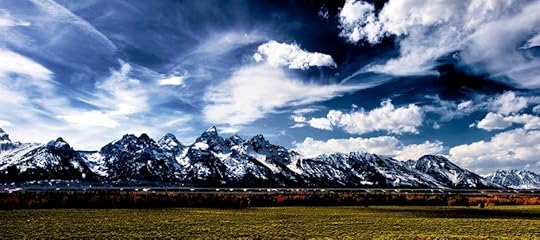
The Grand Tetons. Photo: greg westfall
Start and end: Starts in Cheyenne, ends in Jackson
Key spots: Cheyenne Old West Museum, Curt Gowdy State Park, Snowy Range Scenic Byway, Wyoming Frontier Prison Museum, Sinks Canyon State Park, Grand Teton National Park, Jackson
Trip length: 500 miles, about 8 hours of driving
Duration: At least a week
Features: Incredible sightseeing, haunted museums, hiking, awesome photography
This trip will take you from the Rocky Mountains in the southeast of the state to the Grand Tetons in the northwest. It’s a slightly more southern route than the old Park-to-Park Highway, so while there’s a bit of overlap in the beginning, it splits off before too long.
You’ll start in Cheyenne, where you can visit the Cheyenne Frontier Days Old West Museum. If you go in late July, you can attend the Cheyenne Frontier Days rodeo and festival, the largest outdoor rodeo in the world. From Cheyenne, drive the back road (210) to Curt Gowdy State Park for some under-the-radar yet epic mountain biking.
Laramie makes for a convenient overnight, and then it’s on to the Snowy Range Scenic Byway — a 28-mile stretch of highway through Medicine Bow National Forest — and Rawlins, where you can visit the Wyoming Frontier Prison, the supposedly haunted museum and former state penitentiary built as an attempt to bring some law and order to the Old West.
From Rawlins head up to Lander, and then it’s parks all the way. There’s Sinks Canyon State Park, which has great opportunities to see wildlife, as well as excellent hiking, camping, and rock climbing. You’re back in the mountains now, and nothing will drive that home better than rolling up to Grand Teton National Park, a dream come true for backpackers, climbers, and photographers. Jackson is your destination, one of America’s best-appointed gateways to adventure.
4. Salt Lake to Yellowstone
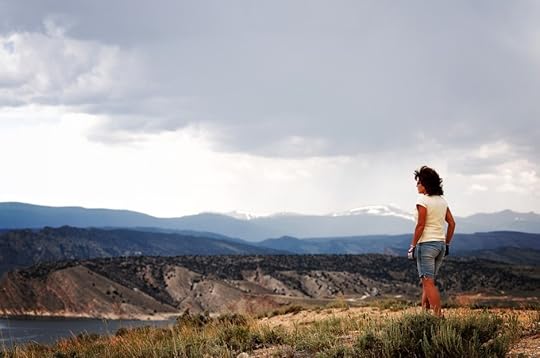
Above Flaming Gorge Reservoir. Photo: a4gpa
Start and end: Starts in Salt Lake City / Utah border, ends in Yellowstone National Park
Key spots: Evanston, Fort Bridger, Flaming Gorge, Fossil Butte, Snake River Canyon, Jackson, Grand Teton National Park, Yellowstone National Park
Trip length: 350 miles, about 7 hours of driving
Duration: 5-10 days
Features: Phenomenal photography opps, tons of wildlife, excellent water sports
This trip takes you from Wyoming’s southwest corner up to Yellowstone. You’ll begin in Evanston, an old railroad town that’s now known for its outdoor recreation, including easy access to Bear River State Park, where you can see bison and elk. Historic Fort Bridger, a supply stop on the Oregon Trail and later a military outpost, is a short drive east on I-80.
Continue along the interstate until exit 99, where you can catch the road south to Flaming Gorge National Recreation Area. The reservoir is a particularly popular water sports destination, whether you’re a boater, angler, windsurfer, or kayaker. From there, backtrack west to Kemmerer and Fossil Butte National Monument to hike around what’s pretty much the largest deposit of marine fossils in the world.
Next, head north along the very edge of the state to Afton, Alpine, and on to Snake River Canyon — worth a visit no matter where you’re going if you’re into whitewater rafting / paddling. Follow the Snake River upstream to Jackson, Grand Teton National Park, and ultimately Yellowstone.
5. The Wild West
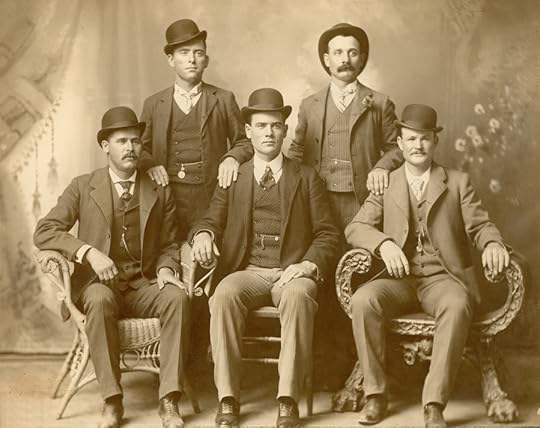
Butch Cassidy and the Wild Bunch. Photo: Wikimedia Commons
Start and end: Starts in Cheyenne, ends in Sundance
Key spots: Cheyenne, Laramie, Douglas, Casper, Buffalo, Gillette, Sundance
Trip length: 425 miles, about 6 hours of driving
Duration: 5 days
Features: Rodeos, historic museums, ghost towns, outlaw hideouts
Understandably, most of the attention in Wyoming goes to the insane outdoor activities and natural scenery across the state. But the local history, particularly as it pertains to the Old West, is worth a trip all on its own. Wyoming made up an important leg of the Oregon Trail, and later became a home for ranchers, miners, and outlaws.
This itinerary starts in the state capital of Cheyenne, where you’ll spend your first couple days. Catch a rodeo if you can — the largest outdoor rodeo in the world, if you come for Frontier Days in July — and day trip over to Fort Laramie and the Grand Encampment, a ghost town built around an old copper mine.
Back in Cheyenne, drive north to Douglas, the Wyoming Pioneer Memorial Museum, and Fort Fetterman. From Douglas, it’s only a 45-minute drive to Casper, where you can visit the National Historic Trails Interpretive Center and learn about the many trails that passed through Wyoming: the Oregon Trail, the Mormon Trail, the California Trail, and the Pony Express.
Next, get into outlaw country in Buffalo, with its Occidental Hotel — Butch Cassidy used to drop in — and the nearby hideout of the Hole in the Wall Gang. Tour the old mine in Gillette before continuing to Sundance, the town that bestowed its name on Cassidy’s right-hand man after we broke out of the local jail. Now that’s the Wild West. 
This post is proudly produced in partnership with the Wyoming Office of Tourism.
Visit their site for more information on these and other epic Wyoming road trips.
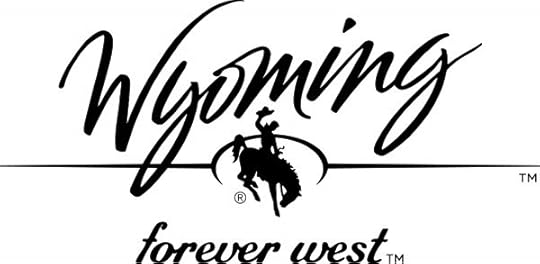

September 28, 2014
The 11 best Airbnbs in Amsterdam
One of the premier destinations in Europe is the great capital Amsterdam. While most of the stories you hear about it tend to focus on the legal pot and prostitution, the city’s far more than that: brilliant, centuries-old architecture, canals cutting through the medieval center, and world-class art and history museums.
It’s hard to get a feel for the city when you’re in a generic hotel or hostel room. It’s much better to spend your time in an actual Dutch domicile. A ton of the Amsterdam homes available on Airbnb are located in the tops of buildings with terraces overlooking the old city, or on houseboats down in the canals.
Here are some of the best we were able to find. 
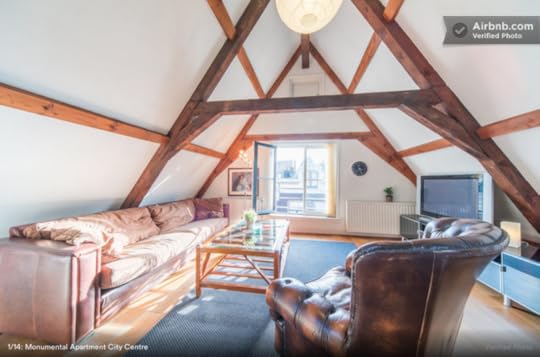
1
Just around the corner from Rembrandt Square in central Amsterdam, this sun-filled rental is $163 a night. It’s a short walk to the flower market, the popular shopping street Kalverstraat, and the Royal Palace of Amsterdam.
(View the listing)

2
A quirk of Amsterdam, a lot of its Airbnb lodgings are houseboats on the canals. This one's particularly pretty. The cost is $133 a night. It’s close to the airport, about 25 minutes away from Amsterdam’s city center—but they provide free bikes to their guests.
(View the listing)

3
From the terrace of this guesthouse by the Raamgracht Canal there's a view of the Zuiderkerk tower. It’s around $122 a night. The neighborhood's right next to the city’s infamous De Wallen—the red-light district.
(View the listing)
Intermission
12 of the best Airbnbs in Rome, Italy
by Joe Batruny
1
10 of the best Airbnbs in Tokyo
by Matt Hershberger
12 of the best Airbnbs in New York City
by Joe Batruny

4
This spot in the De Pijp neighborhood is right by the old Heineken brewery, the Albert Cuyp Market, and the Rijksmuseum. Its obvious highlight is the outdoor terrace. It’s about $111 per night (depending on the exchange rate).
(View the listing)

5
This penthouse is right in the center of Amsterdam along the Keizersgracht Canal and near Rembrandt Square. It’s got a patio (complete with a grill for barbecuing) and free-to-use bicycles, courtesy of the hosts. It’s a rare smoker-friendly loft that rents for about $155 a night.
(View the listing)
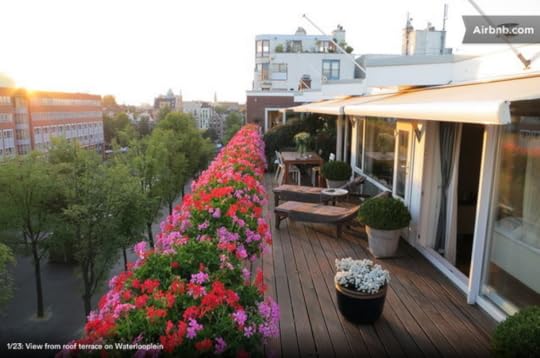
6
This rooftop apartment in the dead center of Amsterdam overlooks Waterlooplein, the site of a daily flea market. There's a broad terrace with an outside fireplace and shower. It’s about $340 per night and is within walking distance of basically everything you’d want to see in the city center.
(View the listing)

7
This loft, in a building dating back to the 17th century, is directly above a cafe in Amsterdam’s heart. It’s around $679 a night.
(View the listing)

8
This 23-meter-long houseboat is on the Prinsengracht Canal right by the Noordermarkt in the Jordaan district. It used to be a cargo ship but has been renovated into a home with a lounge and central heating. It’s around $200 a night.
(View the listing)

9
This spot near Jordaan features a terrace with a swinging chair and a picnic table, for anyone who wants to grill out. It's $129 a night and requires a five-night minimum stay.
(View the listing)

10
Docked in Jordaan, a historic part of Amsterdam, this ship-become-houseboat is appointed with a fire pit, kitchen, and skylights that let in a lot of sun. It’s $265 a night. Because it's near the central station, everything in the city is accessible.
(View the listing)

11
This loft in the De Pijp neighborhood is part of a former monastery, about a 10-minute walk from the Van Gogh Museum and the Rijksmuseum. It costs around $400 a night and accommodates six.
(View the listing)

Matador Network's Blog
- Matador Network's profile
- 6 followers


